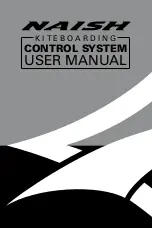
Page 4-12
Rev. 1 Jun/11
TESTING AND TROUBLESHOOTING
61-00-75
Propeller Owner's Manual
175
(3) Excessive engine oil transfer bearing leakage.
Refer to an appropriately licensed propeller repair facility.
(4) Excessive governor pump leakage.
Refer to an appropriately licensed propeller repair facility.
(5) Broken start locks.
Refer to an appropriately licensed propeller repair facility.
K
. Vibration
CAUTION:
ANY VIBRATION THAT CAN BE
DESCRIBED AS APPEARING SUDDENLY,
OR IS ACCOMPANIED BY UNEXPLAINED
GREASE LEAKAGE, SHOULD BE
INVESTIGATED IMMEDIATELY, BEFORE
FURTHER FLIGHT.
NOTE:
Vibration problems due to propeller system
imbalance are normally felt throughout the RPM
range, with the intensity of vibration increasing
with RPM. Vibration problems that occur in a
narrow RPM range are a symptom of resonance,
which is potentially harmful to the propeller. Avoid
operation until the propeller can be checked by
qualified personnel at an appropriately licensed
propeller repair facility.
(1) Check:
(a) Control surfaces, cowl flaps, exhaust system,
landing gear doors, etc., for excessive play, which
may be causing vibration unrelated to the propeller.
(b) Engine mounted hardware is secure.
(c) Engine mount wear.
(d) Uneven lubrication of propeller.
(e) Proper engine/propeller flange mating.
(f) Blade track. (For procedure, see the Inspection and
Check chapter of this manual.)
(g) Blade angles: Blade angle must be within 0.2 degree
from blade to blade.
(h) Spinner for cracks, improper installation, or "wobble"
during operation.
(i) Static balance.
OBSOLETE PROPELLER MODELS. SEE COVER PAGE
WARNINGS AND SERVICE BULLETIN HC-SB-61-331
















































